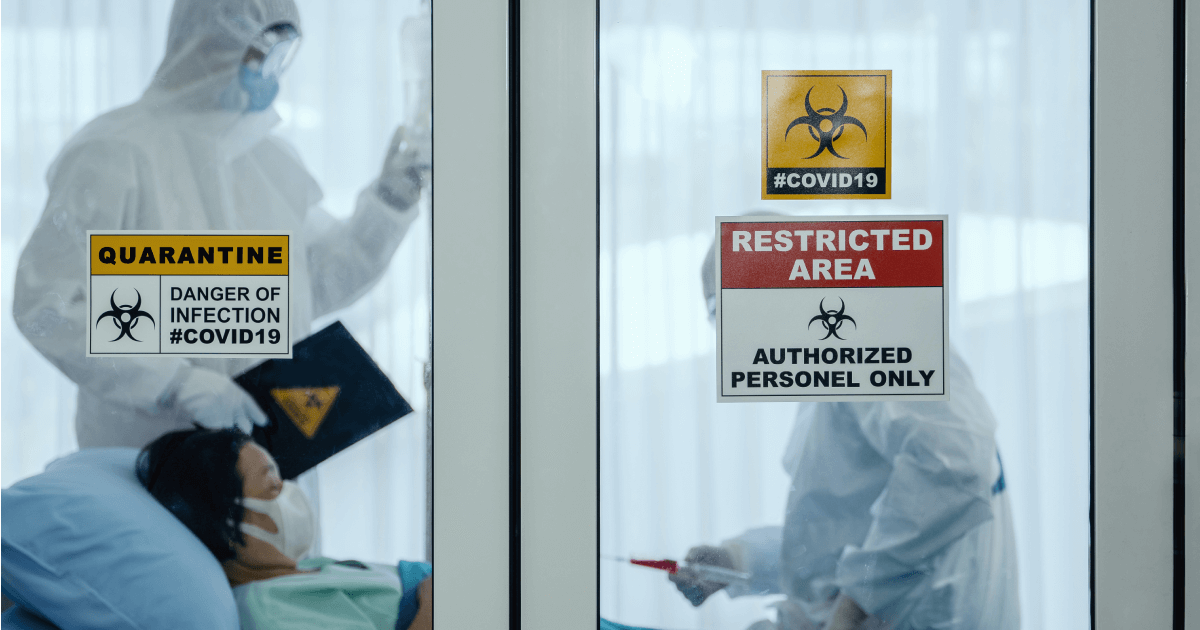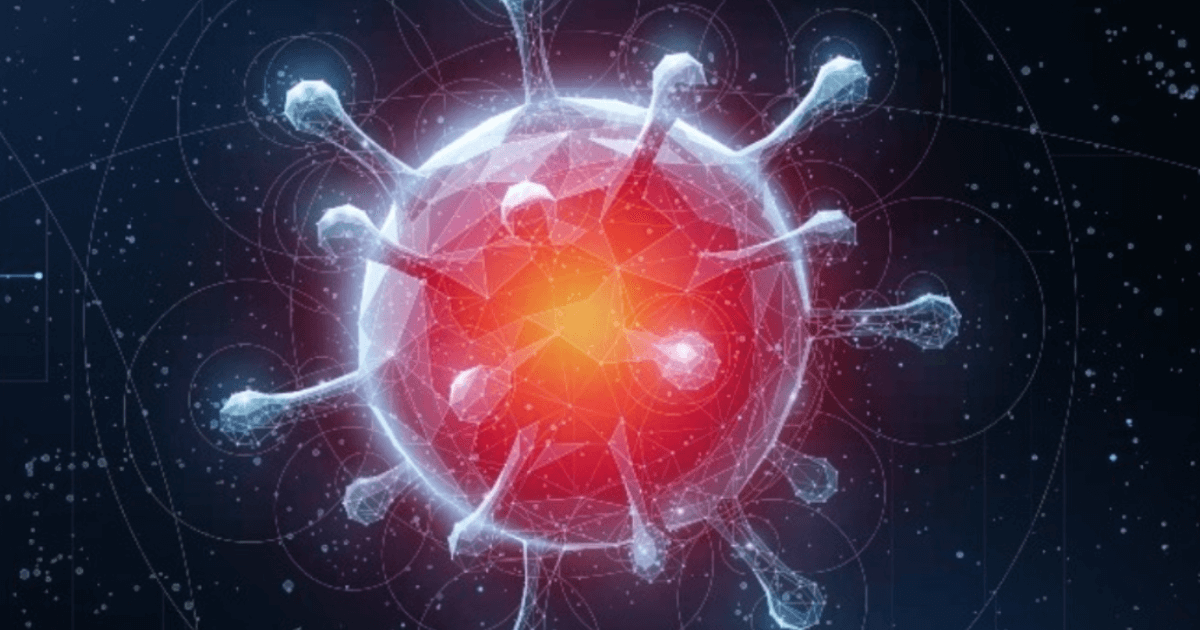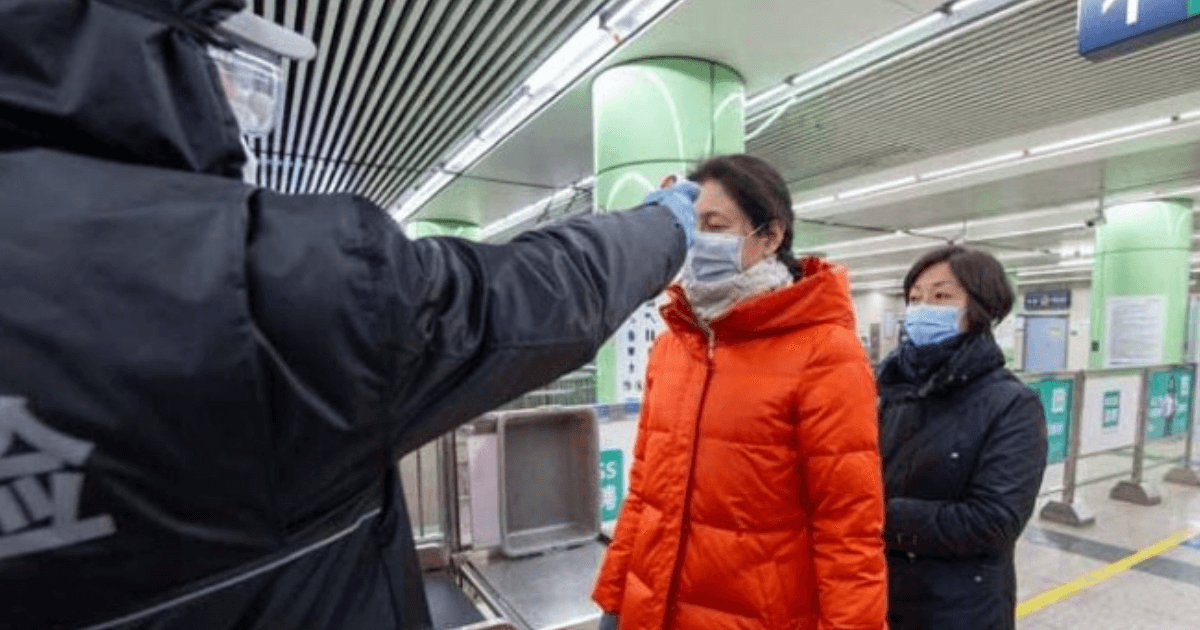Quarantined gateways for Covid-19
As on 26th February 2020, the outbreak of Corona Virus-19 which started in December 2019 in mainland China has spread over to 37 countries other than China (WHO). The total number of confirmed cases are 81109 (with 871 new cases). Out of these total cases, 78191 cases (412 new cases) are from China only and rest from other 37 countries. The total number of deaths so far are 2718 from China while 43 from rest of the world.
The risk assessment by WHO has classified COVID-19 into very highrisk category within China and highrisk category outside China. As per CDC case definition, it causes lower respiratory issues with cough or dyspnea in those who are in close contact with lab confirmed case on a span of 14 days. The contact with such confirmed personnel with ≤ 6 feet for a prolonged time (without any PPE) can cause disease. The round shape of β Corona virus is like crown or halo around sun, single stranded RNA with associated spikes on outer surface. It has hACE 2 (human angiotensin convertase 2) similar to SARS-CoV. Considering its analogy with SARS-CoV, it is likely to be killed by sunlight, temperature and humidity. The virus attacks lungs and not just throat. The virus is transmitted via droplet (during sneezing); direct contact; fomites and stools. It is zoonotic in nature and can possibly transmit during incubation period.
WHO declared COVID-19 outbreak a public health emergency of international concern (PHEIC) on 30 January 2020. Being signatory to International Health Regulations 2005, India declared travel restrictions and activated its national action plan to put suspicious victims in quarantine and subsequently in isolation if required. Further Section 270 of Indian Penal Code (“an act likely to cause spread will lead to imprisonment upto 2 years, or fine, or both”) is being exercised for managing legal requirement of quarantine in place. Presently, the rough estimates of COVID-19 revealed that median age vulnerable to infection is around 59 years. Its incubation period is minimum 14 days and children with age < 15 years are less likely to get infected. The plausible reproduction Number is 2.2. The case fatality rate of COVID-19 is nearly 2% while MERS, SARS, Ebola, Smallpox, Swine Flu and seasonal flu have 34%, 10%, 50%, 40%, 4% and 0.01% respectively. However, 20% generally require ICU care in which mortality rate is 15% as there is significant impact on death rate due to comorbidity profile.
The virus attacks lungs and not just throat. The virus is transmitted via droplet (during sneezing); direct contact; fomites and stools. It is zoonotic in nature and can possibly transmit during incubation

The laboratory culture based genetic test requires BSL 3 in which samples are throat and oral swabs. At present, no proven treatment is available. For special cases Drug Controller of India approved restricted use of Lopinavir, ritonavir under medical supervision. Moderna Therapeutics, a biotech-based company in Cambridge with help of Chinese researchers released vaccine against COVID-19 (SARS-CoV-2) and shipped it on 26th February 2020. Antiviral drug Remdesivir is under trial.
The advance quarantine facility requires scalable interventions with active public participation. It requires resources and is also labor intensive. COVID-19 is at our gateways and ‘quarantine’ is primary and most important step to prevent its spread.
We are often confused between ‘quarantine’ vs. ‘isolation’. Quarantine simply refers to separation and restriction of movement of normal looking asymptomatic yet suspicious to be infected individuals. However, isolation refers restricting movement of personnel with possible infection, exhibiting some symptoms in a physically separated medical facility. Both require similar disinfection and decontamination practices, however in latter case, protection of medical responders / care providers demands higher level of monitoring and surveillance. The provisioning of food, clothing, shelter, communication and competent medical care is common to both cases though in isolation, if someone dies, the proper disposal and other religious practices / community sentiments may proceed as per specific standard operating procedures. The quarantine zone should be safe/ hygienic, preferably away from resident communities, though equipped with all essential provisions. It also contains a special prayer place with all religious symbols collated at one place assigned for religious activities. The quarantine zone should divide into digitally monitored sleeping zones, play zone and eating zones.

Provision of standby ambulances for transferring personnel with symptoms or reporting discomfort should be present. Self-reporting comes through awareness about the problem, alleviation of myths and building up of trust between care providers and victims. This practice coupled with direct monitoring of personnel under quarantine referred as passive and active surveillance. The provision of vaccine and antibiotics / rapid diagnosis & time referral should be included. Social distancing needs supporting ecosystem.
It requires: (a) selection of geographical area with barrier restriction i.e. possibly free from vegetation, wild animals and pests; (b) distancing of victims with deployed staff; (c) clear information exchange between health staff within quarantine zone and outside; (d) empathy and counseling of inmates and; (e) effective communication with public and other hierarchical signatories. The quarantine camp consists of a secluded area with water & wind proof shelters.
These shelters have ventilated zones (except airborne infection) with proper lighting inside living area and surroundings and impervious flooring (smooth surfaces, marble surfaces) so that it can be washed/disinfected easily. The principle of distancing (minimum 1m) is maintained for beddings. Clean linen, mattress and disposable pillows are provided with storage space for personal effects.
Adequate supply of appropriate PPE is required for health care workers, detainee and support staff on daily basis. At present in India, N95 masks and 3-ply masks are used. The 3 –ply mask has outer-leak proof polypropylene/ rayon spun bond layer; middle: high-density nonwoven fabric filter melt-blown layer plus inner- water resistant soft spun bond layer. Designed with adjustable nose strip as well as flat or round elastic ear – piece, 3-ply mask only provides barrier protection.
N-95 single use mask blocks at least 95% of 0.3 micron test particles. User must change if respirator get damage or soiled. However, N95 masks do not protect against chemical vapors, gases, carbon monoxide; gasoline, asbestos, lead; and low oxygen environment. Personnel protective equipment should include goggles; hood; gloves with cuffed sleeves of an impervious gown; gum boots with protective toecaps & penetration-resistant recommended respiratory protection.
Among various disinfection agents, sterisol is optimally safer and effective. As per French standards, “Steam disinfection of surfaces” NF T72- 110 is applicable standard. The steam disinfection was reported (in 2005) to be effective against SARS Coronavirus. SteriGEN system is able to generate a mixture of stable HClO and other oxidants like hydroxyl anion, peroxide anion and oxonium ion.

It is safe for human and animal health. It is ecofriendly and used in aerosol disinfection. USFDA and European CE recognize it as one of the most effective alternatives to traditional chemical biocides. It is high level disinfectant and 70 times powerful than chlorine bleach. It can kill types of bacteria, viruses, fungi & spores, within a short contact time of 5 min. For mopping and washing 0.1% Sod hypochlorite & Cresol black is effective.
For disinfecting Linen and personal belongings boiling and soaking in 0.1 % sodium hypochlorite for 30 minutes followed by sun drying is effective. Similarly, 0.5% sodium hypochlorite treatment for 30 min can disinfect used masks, PPE and gloves. For cleaning toilets water, cresol black and sterisol or its equivalent disinfectant can be used. The effluent also needs treatment with 2% sodium hypochlorite for 30 min treatment. Special vacuum tanks should be affixed with mobile toilets for fecal matter collection. Biomedical Waste Management Rules 2016 (modified), recommend non-urethane bags (red bags for gloves and yellow for rest of items) for waste.
The area also requires clean water for drinking, bathing and other amenities. The perimeter of the quarantine area should be well secured with deployed personnel, pathways should be well marked and lit; surroundings should have proper monitoring measures in place. Mobile QRT should be deployed at site and CCTV cameras to control complete perimeter.
Each and every safety aspect should be planned in advance with provision of back up measures. Cost estimation and provision of advance for this mitigation measure should be in place. In every aspect, preventive steps are less expensive than managing complete State after the outbreak.
Now the question is are we as country ready to manage this threat? The recent successful quarantine of first batch of personnel from Wuhan by Government of India gives us hope and provides the example of such preparedness. However, we should not forget that COVID-19, spread rate is very high. Therefore, everyone needs to gear up to face this challenge ahead. Precaution, awareness and self-consciousness is necessary for such management.
General hygiene practices and sneezing etiquettes help to reduce the chances of spread. Self-quarantine for two weeks in case of suspected flu like symptoms and wear 3-layered mask if you are patient. N95 mask is required for health care workers and close contacts to reduce the chances of disease spread.
Composed by Dr. Sarita Jaiswal, ex-research officer, University of Saskatchewan

